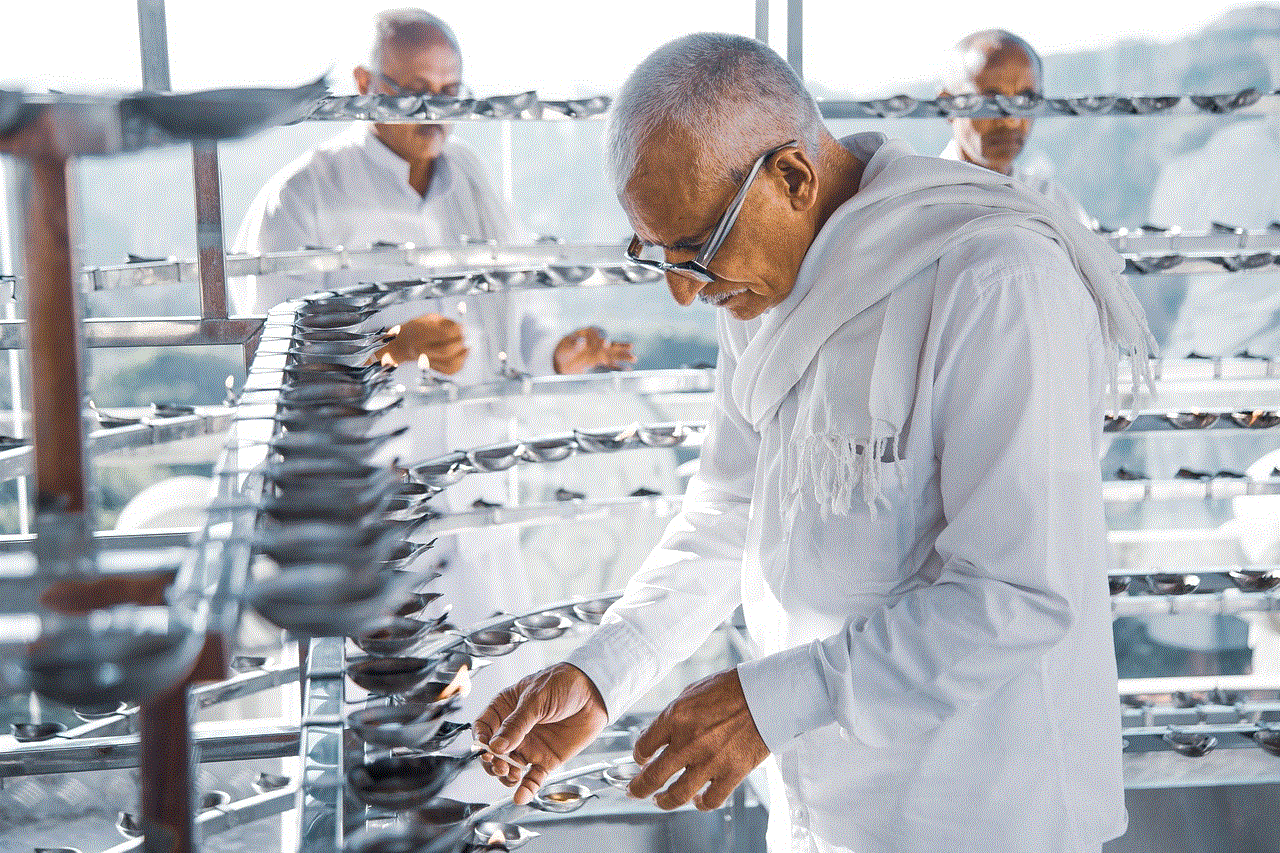what do dtf mean on snapchat
In today’s modern world, technology has become a crucial part of our social and personal lives. With the rise of social media platforms, people are now more connected than ever before. One of the most popular social media platforms among young adults is Snapchat . This multimedia messaging app has gained immense popularity due to its unique features, including filters, disappearing messages, and the infamous “Snap Map.” However, with its growing popularity, there are also some controversial terms that have emerged on this platform. One such term is “DTF,” which has raised many questions among users. In this article, we will explore the meaning of DTF on Snapchat and its implications.
Firstly, let’s understand what Snapchat is and how it works. Snapchat is a multimedia messaging app that allows its users to share photos, videos, and messages, which disappear after a short period. The app was launched in 2011, and since then, it has gained over 265 million daily active users. One of the main reasons behind its popularity is its unique features, which provide a fun and interactive way to communicate with friends and family. However, like any other social media app, Snapchat has its own set of jargon and slang terms that can be confusing for new users.
One such term is DTF, which stands for “Down to F**k.” This term has been in use on other social media platforms like Instagram and Tinder, but it has gained more popularity on Snapchat. DTF is often used to indicate that a person is sexually interested in someone and is willing to have casual sex. However, the use of this term on Snapchat is quite different from other platforms. On Snapchat, users can send photos or videos to their friends or post them on their stories, which disappear after a short period. This feature has made it a popular platform for sexting, and DTF has become a part of this culture.
So, what does DTF mean on Snapchat? As mentioned earlier, DTF stands for “Down to F**k,” but on Snapchat, it has a broader meaning. When someone uses DTF on Snapchat, it can mean that they are interested in having casual sex with the person they are talking to, or it can also be used to express their desire to engage in sexting. However, it is essential to note that the meaning of DTF on Snapchat can vary from person to person, and it is not always a clear indication of their intentions.
The use of DTF on Snapchat has raised concerns among parents, and rightfully so. The app is quite popular among teenagers, and the use of such terms can expose them to inappropriate content and conversations. Moreover, Snapchat has features like the Snap Map, which allows users to see the location of their friends in real-time. This feature can be misused by predators to target vulnerable teenagers. Therefore, it is crucial for parents to monitor their children’s activities on Snapchat and educate them about the potential dangers of using such terms.
Another concern regarding the use of DTF on Snapchat is the objectification of women. As mentioned earlier, DTF is often used to express sexual interest, and it is mostly aimed at women. This objectification of women has been a long-standing issue on social media platforms, and Snapchat is no exception. The use of DTF on Snapchat can perpetuate the idea that women are merely sexual objects, and this can have a negative impact on young minds. It is essential to educate both men and women about the harmful effects of objectification and promote respect and equality.
While DTF has become a popular term on Snapchat, it has also sparked debates among users. Some people argue that the term is just a harmless slang term used to express interest in someone, while others believe that it promotes the hook-up culture. The truth lies somewhere in between. While there is nothing wrong with expressing sexual interest, using terms like DTF can also lead to misunderstandings and miscommunication. It is crucial to communicate clearly and respectfully with others, both in person and on social media.
Apart from its implications, the use of DTF on Snapchat has also led to some hilarious and embarrassing situations. Many users have shared their experiences of misinterpreting the term, which has resulted in awkward conversations. This highlights the importance of understanding the meaning of terms and using them appropriately. As they say, “with great power comes great responsibility,” and this holds for social media as well. It is essential to use terms wisely and responsibly, especially on platforms like Snapchat, where the content disappears after a short period.
In conclusion, DTF is a popular term on Snapchat, which stands for “Down to F**k.” It is often used to express sexual interest or the desire to engage in sexting. However, its use has raised concerns regarding the objectification of women and the potential dangers it poses to teenagers. It is essential to educate oneself and others about the implications of using such terms and promote respectful and healthy communication on social media. It is also crucial for parents to monitor their children’s activities on Snapchat and have open conversations about the responsible use of social media. As for users, it is best to use terms like DTF with caution and understand that their meaning can vary from person to person.
disadvantages of starting school later
Starting school later in the day has been a topic of debate for many years. While some argue that it allows for more rest and better academic performance, others believe it disrupts family routines and causes logistical challenges. This issue has gained more attention in recent years as studies have shown the negative impact of early school start times on student health and well-being. However, like any other topic, there are also disadvantages to starting school later. In this article, we will explore the disadvantages of starting school later and how they may outweigh the benefits.
1. Disruption of Family Routines
One of the main disadvantages of starting school later is the disruption of family routines. Many families have established a routine that revolves around early school start times. Parents may have to leave for work early in the morning, and younger siblings may have to be dropped off at daycare or school before the older ones start their day. By starting school later, this routine is disrupted, and parents may have to make significant changes to their schedules to accommodate the new start time. This can cause added stress and inconvenience for families, especially for working parents.
2. Reduced Time for Extracurricular Activities
Starting school later means that the school day will end later as well. This can significantly impact the time students have for extracurricular activities such as sports, clubs, and other after-school programs. Many of these activities may have to be cut short or cancelled altogether due to the later school end time. For students who rely on these activities for physical exercise, socialization, and personal development, this can be a major disadvantage. It can also be challenging for parents who have to coordinate their schedules to pick up their children later in the day.
3. Difficulty in Scheduling Appointments
For parents, starting school later can also make scheduling appointments for their children more challenging. With a later school start time, students may not be dismissed until later in the afternoon. This means that parents may have to take time off from work or rearrange their schedules to attend doctor’s appointments, extracurricular activities, or other commitments. This can be a significant inconvenience for working parents, and it can also cause disruptions in the workplace.
4. Potential for Longer Commutes
Another disadvantage of starting school later is the potential for longer commutes. In urban areas, where schools are often located near major roads and highways, starting school later can mean that students are commuting during peak traffic hours. This can result in longer commute times, which can be stressful for both students and parents. It can also increase the risk of accidents and tardiness, which can have a negative impact on students’ academic performance.
5. Impact on After-School Jobs



Many high school students rely on after-school jobs to earn extra money or gain work experience. By starting school later, these students may not be able to work as many hours as they would with an earlier start time. This can limit their opportunities for employment and financial independence. It can also be a disadvantage for students who need to save money for college or other future expenses.
6. Difficulty in Adjusting to College Schedules
For high school students who are preparing to attend college, starting school later can be a disadvantage. College schedules typically start earlier in the day, and students who are used to starting school later may struggle to adjust to this change. This can result in difficulty waking up early, attending morning classes, and managing their time effectively. It can also impact their academic performance and overall success in college.
7. Increased Energy Costs
Starting school later can also lead to increased energy costs for schools. With a later start time, schools may have to keep the lights on for longer periods, resulting in higher electricity bills. This can be a significant disadvantage for schools that are already struggling with budget cuts and limited resources. The increased energy costs may also impact other areas of the school, such as funding for extracurricular activities, classroom materials, and teacher salaries.
8. Difficulty in Scheduling Exams
For high school students, exams are a crucial part of their academic success. Starting school later can make it challenging to schedule exams, especially if they need to be completed before the holiday break or at the end of the school year. With a later start time, schools may have to modify their exam schedules, which can be disruptive and stressful for students. It can also impact the amount of time students have to prepare for exams, potentially affecting their grades.
9. Challenges for Working Parents
Starting school later can also be a disadvantage for working parents. With a later start time, parents may have to drop off their children at school later in the morning, which means they may have to leave work early or take time off. This can be challenging for parents who have demanding jobs or limited vacation time. It can also impact their productivity and job performance, which can have a ripple effect on their career advancement and financial stability.
10. Disruption of After-School Programs
Many schools offer after-school programs such as tutoring, study groups, and other academic support services. By starting school later, these programs may need to be rescheduled or cancelled altogether. This can be a disadvantage for students who rely on these programs for academic assistance and support. It can also impact their academic performance and overall success in school.



In conclusion, while starting school later may have its benefits, there are also several disadvantages to consider. The disruption of family routines, reduced time for extracurricular activities, difficulty in scheduling appointments, potential for longer commutes, impact on after-school jobs, challenges in adjusting to college schedules, increased energy costs, difficulty in scheduling exams, challenges for working parents, and disruption of after-school programs are all factors that should be taken into account when considering a later school start time. While it is essential to prioritize the health and well-being of students, it is equally important to consider the potential consequences of implementing a later school start time. Ultimately, the decision should be made after careful consideration of all factors, including the potential disadvantages.
halo infinite rating age
Halo Infinite is the highly anticipated sixth installment in the popular Halo franchise. Developed by 343 Industries and published by Xbox Game Studios, this first-person shooter game is set to be released in late 2021. As the release date draws near, fans are eagerly waiting to get their hands on this game and experience the next chapter in the Halo universe. However, one question that has been on the minds of many is the age rating for Halo Infinite. In this article, we will delve into the details of the Halo Infinite age rating and what fans can expect from the game.
Before we dive into the age rating of Halo Infinite, let’s take a look at the history of age ratings in the Halo franchise. The first Halo game, Halo: Combat Evolved, was rated M for Mature by the Entertainment Software Rating Board (ESRB) in 2001. This rating was given due to the game’s intense violence and blood. Since then, all the sequels in the franchise, including Halo 2, Halo 3, Halo 3: ODST, Halo: Reach, Halo 4, and Halo 5: Guardians, have also received an M rating.
The ESRB is an independent organization responsible for assigning age and content ratings to video games in North America. They have a set of guidelines that they use to determine the appropriate age rating for a game, taking into consideration factors such as violence, language, and sexual content. The ratings range from Early Childhood (EC) to Adults Only (AO), with M for Mature being the second-highest rating.
Now, let’s get back to the question at hand – what is the Halo Infinite age rating? According to the ESRB, Halo Infinite has received an M rating, making it suitable for players aged 17 and above. This rating comes as no surprise, as all the previous games in the franchise have also received an M rating. However, the rating summary provided by the ESRB sheds some light on the specific reasons for the M rating for Halo Infinite.
The ESRB states that Halo Infinite contains blood, violence, and gore. This is a common theme in the Halo franchise, with players taking on the role of Master Chief, a genetically enhanced super-soldier, and engaging in intense battles with aliens. The rating summary also mentions the presence of strong language in the game. This is not uncommon in the Halo franchise, as the previous games have also featured strong language in the form of profanity and derogatory terms.
Apart from the violence and language, the ESRB also mentions the presence of sexual content in Halo Infinite. This might come as a surprise to some fans, as the previous games in the franchise have not featured any explicit sexual content. However, the ESRB clarifies that this content is limited to some suggestive dialogue and innuendos. This is in line with the previous Halo games, where there have been instances of suggestive dialogue and references to sexual content, but nothing explicit.
It is worth noting that the Halo Infinite age rating is not final and may change as the game nears its release. This has been the case with previous games in the franchise as well, where the ESRB has updated the age rating based on additional information or changes made to the game. However, it is highly unlikely that the age rating for Halo Infinite will change from M for Mature to a lower rating.
So, what does this M rating mean for fans of the Halo franchise? Firstly, it means that the game will contain intense violence, blood, and gore, as well as strong language. This is something that fans have come to expect from the Halo games and is a crucial aspect of the franchise’s gameplay. However, with the mention of sexual content in the rating summary, some fans might be concerned about the direction the game is taking.
343 Industries has not provided any details about the sexual content in Halo Infinite, and it remains to be seen how it will be implemented in the game. Some fans have speculated that it might be related to the new multiplayer customization options, where players can create their own Spartans with different armor sets and armor coatings. However, this is purely speculation at this point, and only time will tell how the sexual content will be incorporated into the game.



Another aspect to consider is the impact of the age rating on the game’s sales and popularity. The Halo franchise has a large fan base, and the majority of its players are over the age of 17. The M rating might deter some younger players from purchasing the game, but it is unlikely to have a significant impact on the franchise’s overall success. Moreover, the ESRB ratings are merely guidelines, and it is ultimately up to the parents or guardians to decide if the game is suitable for their children.
In conclusion, the Halo Infinite age rating has been confirmed to be M for Mature, with the ESRB citing violence, language, and sexual content as reasons for the rating. This is in line with the age ratings of previous games in the franchise and is unlikely to change. While the M rating might raise some concerns for fans, it is an integral part of the Halo franchise’s gameplay and is not expected to have a significant impact on the game’s sales. With its release just around the corner, fans can look forward to experiencing the next chapter in the Halo universe and continuing Master Chief’s epic journey.